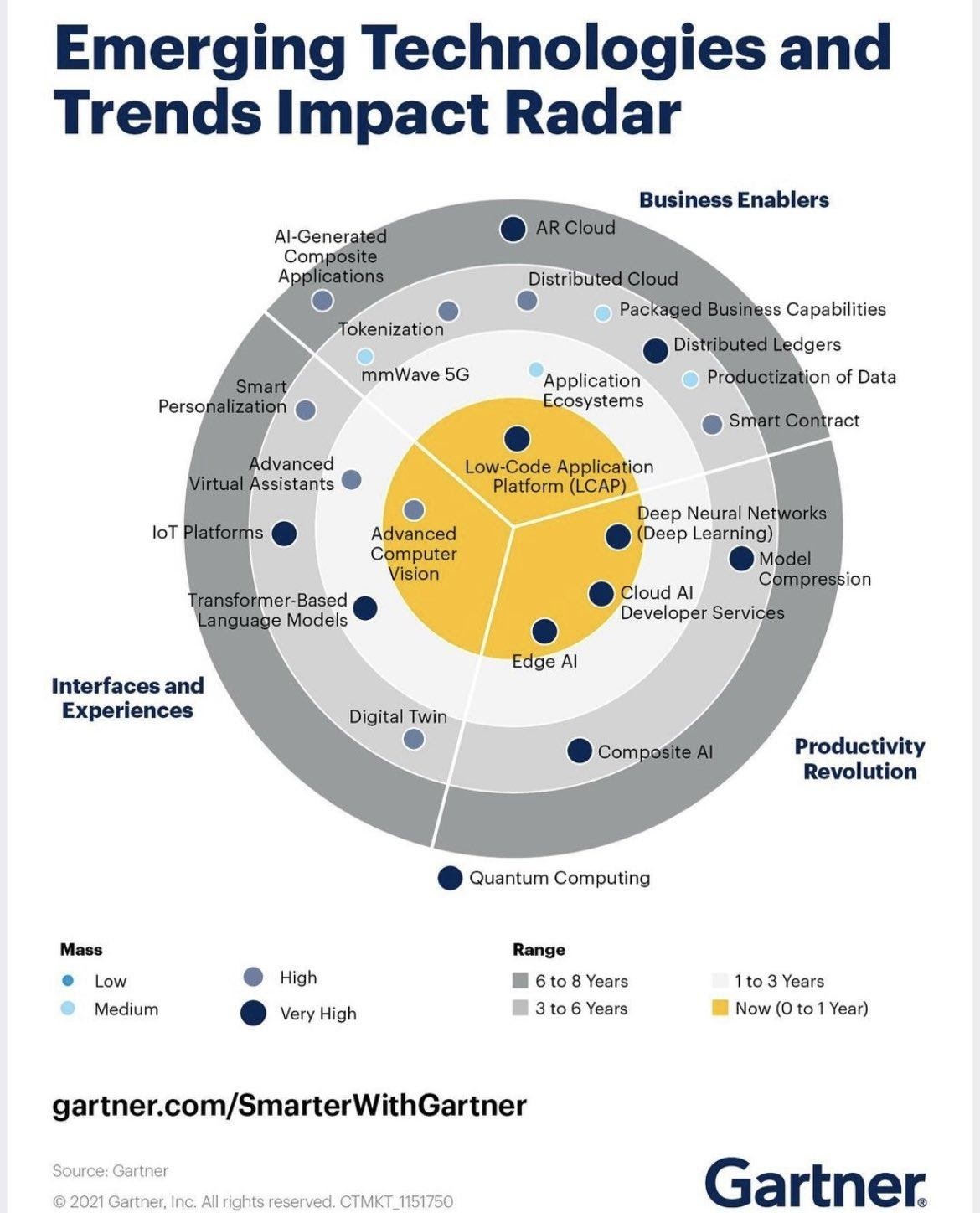Low-code platforms are technologies that can be used to create software with less effort than in the case of traditional methods, frameworks, and coding languages. In particular, they minimize the amount of actual coding required, which means the job of a low-code developer is a bit different than in the case of, say, a Java developer. It also means that, with some guidance, non-technical people (like business managers, for example) can take a more proactive role in the process of application development.
How does it all work? The basic idea of low-code development is pretty simple – you build software from preexisting elements (imagine building blocks), using an intuitive interface based on ready-to-connect graphical elements (so-called “drag-and-drop”). Your actions are then translated into the appropriate programming language. This way, simple applications can be created really fast with very little coding knowledge required. Of course, to really get the most out of low-code platforms, you’ll have to have some programming expertise (this is what differentiates low-code from no-code), but many things can be done without it. “Easy to learn, hard to master” is the rule here. This way, you can create pretty much anything you want — for example, warehouse management software, a booking system, or a customer support dashboard.
There are many low-code platforms on the market, such as Microsoft Powerapps, Outsystems, Mendix, Salesforce, Appian, and Oracle APEX – to name only a few of the most prominent ones (according to the analytics company Gartner). It’s worth noting that comparing these products serves little purpose – they’re meant for different things. There’s no such thing as “the best low-code development platform”. If you want to know more about them, there are several articles on our blog dedicated to some of these technologies:

There are many different advantages of using low-code in your company. Here’s what I consider to be the most important ones.
Let’s be blunt here – software development is expensive. For companies outside the IT industry, or those running a side business, the cost of software is often disproportionately high. To give you an example: some healthcare firms spend nearly as much on new systems and applications, as they do on scientific research – which is the core of their business, and the main cash source. While some huge enterprise can afford that, for most companies such modus operandi really isn’t sustainable in the long run.
The low-code approach allows you to reduce these costs substantially, thanks to the facts I’ve already mentioned in the description above – it’s a lot faster than traditional development and it introduces people from outside of the IT world into the process (I’ll explain this in more detail in the next section of this article). As you know, nowadays a software developer’s work hour is almost worth his weight in gold (it’s a hyperbole, of course, but you get the idea), so reducing the number of these hours is usually a good thing.
How much faster is low-code? According to the poll conducted by Statista at the turn of the year 2020 (December 2020 – January 2021) on a group of 1022 leaders responsible for whole businesses, IT, or digitalization – quite a lot. 18% of respondents consider it to be between 60% and 80% faster than traditional development. 29% of them chose the 40-60% option, and the 20-40% bracket was chosen by another 27% of surveyed people. Even the least attractive of these scenarios means a lot – a lot – money can stay in your company’s pocket, and there are people who consider the benefits of low-code to be even higher.

All of this is of paramount importance, even in normal circumstances, but especially in post-Covid times, when digitization and the cloud suddenly became the new norm. In the last two years, many companies have found themselves in dire need of new software solutions that would help them accommodate the unusual situation. But where to find the money for these things? Low-code is the answer.
Another very important thing is that low-code focuses on solving business problems, instead of problems with technology – or problems with the IT industry itself. For example, everyone who has tried to hire professional software developers in the last decade knows that the competition in the market has gotten really fierce. Companies do what they can to attract talent. Salaries constantly go up, accompanied by various additional – and expensive – benefits.
This means that in some cases creating and maintaining an internal IT department is kinda “a job inside the job” – a huge undertaking in and of itself. People spend so much time, effort, and money on accommodating software developers, that they lose focus of their business and goals.
Low-code addresses this problem by introducing so-called “citizen developers” (people from outside of IT space) into the process of software development, and therefore lessening the role of IT specialists. The additional benefit here is that low code makes it much easier to take into account the opinions and ideas of non-IT employees – like people these apps are made for (business users, for example). It’s also easier to train them in the software’s use.
Another issue – directly connected to the problem described above, but important enough to be mentioned separately – is the reality of supply and demand. Not too long ago IDC predicted that more than 500 million new applications will be made before the end of the year 2023, and the sentiment was mirrored by others (like Rajiv Sodhi, the COO of Microsoft India).
The analysts consider this number to be up to 5 times higher than what the workforce can currently deliver, and that’s before we count in the new versions of existing applications. In short: because of the ongoing war for talent and the lack of developers, creating the software you need might be harder than you think.
Considering all this, it’s easy to see how technologies that lessen the role of IT specialists in the process of developing software can be beneficial to companies.
High costs are understandable if they are accompanied by the quality that’s equally high, but sadly, that’s not always the case. Once upon a time, IT has been identified with progress and acceleration of changes. Investment in this area was seen as the best way to speed your business up. Currently, that’s not entirely true. Complex software projects take a lot of time to finish, and even when they’re technically “done”, it often turns out more work is still required. Time to market counted in months or even years is far from optimal in most circumstances.
Low-code application development can offer several unique advantages here. Firstly, it allows you to create software a lot faster. I’ve already mentioned that in the section about IT cost, but it’s a factor that affects a company in several ways – and therefore it’s worth repeating. Often the first effects can be seen after a few days or even hours of work. That basically means you can answer challenges as they arise, instead of tackling them in the more or less distant future.
Secondly, low-code standardizes the process of making software. Companies that designed low-code development platforms (such as Oracle, or OutSystems) chose well-tested components and defined how the applications are developed and deployed. Developers can change these things if they really need to, but the key idea here is that they have a baseline, a set of “good practices” that’s usually worth following (there are also tools that can help you make sure that they are kept, such as APEX Advisor or APEX Standard Tracker for Oracle Application Express). Also, the apps created on these low-code platforms are available through them, which means that some things – integrations, user management, authentication, and so on – will be the same in the case of every piece of software. They’re defined at the level of the platform itself, instead of each individual application (though that still remains a possibility, if it’.
This standardization results in maintenance being easier and less problematic. I’m sure you can already see why: many things are the same in every application, and they use components that have already been extensively tested by someone else (i.e. the company responsible for the low-code development platform) on various systems, browsers and so on. That means much less work is required.
All of the above also makes it a lot harder to blur the responsibility for mistakes – if you follow the standards, you see who doesn’t, and the platforms log most things developers do very scrupulously. That makes certain quality bars easier to enforce. To put it simply, you’ll not only spend less money, but it’ll be easier to make sure it was actually spent well.
One of the cool things about low-code is that most platforms are either natively located in the cloud, or have an option to be placed there. This allows companies to easily change the way they develop and manage their environments. It also makes systems based on these platforms very future-proof – because, let’s face it, the cloud’s prevalence will only grow in the coming years. According to IDG, even now 81% of organizations use the cloud in some capacity, and, this year, almost a third (32%) of the total IT budget of companies will be spent on cloud computing. So, by going low-code now, you can already prepare your company for migrating to the cloud in the near future.
As you can see, there’s a lot to gain from using low-code solutions in your company – if you want to create software at a much lower cost, and do it substantially faster, low-code is a no-brainer. It’s no wonder it’s such a hot topic nowadays. If we look at Gartner’s Trend Impact Radar (above) Low-Code Application Platform (LCAP) is almost at the very center. It means it’s considered to be one of the most impactful things in the IT world right now, alongside such technologies as Deep Neural Networks (Deep Learning), Cloud AI Developer Services, Edge AI, and Advanced Computer Vision. This trend isn’t going to change anytime soon. So, why wait? Take the plunge – I can assure you that it’ll be worth it.

Pretius has a huge deal of experience in this field – we’ve been active in it since 2008. We have a dedicated low-code subsidiary company, with over 40 specialists and developers certified in various technologies, such as Oracle APEX, OutSystems, Mendix and so on. If you’re interested in cooperating with us, write at hello@pretius.com or just use the contact form below – and tell us your needs. We’ll check whether we did projects similar to yours and get back to you in 48 hours.